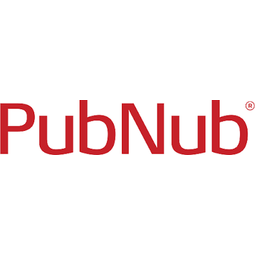技术
- 分析与建模 - 实时分析
- 应用基础设施与中间件 - 数据可视化
适用行业
- 水泥
- 建筑与基础设施
用例
- 实时定位系统 (RTLS)
- 时间敏感网络
服务
- 数据科学服务
- 系统集成
关于客户
本案例中的客户是 Orkan Telhan 和 Mahir Yavuz,他们是专门从事数据可视化的跨学科艺术家。他们一直在欧洲各地表演他们的项目,United Colors of Dissent (UCoD),这是一个数据驱动的表演,专为城市环境中的现场公共互动而设计。该表演通过创建动态可视化和信息图表来捕捉不同社区的语言和社会文化概况。公共场所的观众可以通过浏览器上的简单 URL 加入表演,并使用简单的滑块每 30 秒回答一次问题。他们的答案被收集在一个池中,并根据这些答案,结果在媒体外观上可视化。
挑战
United Colors of Dissent (UCoD) 是一项数据驱动的表演,专为城市环境中的现场公共互动而设计。该表演通过创建动态可视化和信息图表来捕捉不同社区的语言和社会文化概况。公共场所的观众可以通过浏览器上的简单 URL 加入表演,并使用简单的滑块每 30 秒回答一次问题。他们的答案被收集在一个池中,并根据这些答案,结果在媒体外观上可视化。面临的挑战是在收集数据时将其可视化并立即与观众共享,以便在整个表演过程中向他们提供反馈。创作者 Orkan Telhan 和 Mahir Yavuz 需要实时技术将他们的问题结果广播到媒体正面,并让每个人同时看到彼此的答案。他们还需要一种解决方案,能够同时处理用户数量的大幅波动(从少量到数千个用户),并提供实时延迟,无论演出在哪个城市进行。
解决方案
该解决方案是在 PubNub 实时网络中找到的,该网络成为该项目的核心部分。项目中的所有消息传递,从提出问题到接收答案,再到广播可视化,都是通过 PubNub 完成的。该项目的整个通信层依赖于 PubNub 的实时消息传递 API 和 PubNub Data Streams。 Telhan 和 Yavuz 没有花费时间和资源来构建实时基础设施,而是能够插入 PubNub 并使其尽快运行。这使他们能够更多地关注可视化、问题和艺术项目的其他元素。 PubNub 因其可扩展性(地理位置和用户数量)而被选中。 PubNub 在全球拥有 14 个数据中心,能够处理用户群,无论性能发生在哪个城市,都能提供实时延迟,并处理用户的大幅波动。
运营影响

Case Study missing?
Start adding your own!
Register with your work email and create a new case study profile for your business.
相关案例.

Case Study
System 800xA at Indian Cement Plants
Chettinad Cement recognized that further efficiencies could be achieved in its cement manufacturing process. It looked to investing in comprehensive operational and control technologies to manage and derive productivity and energy efficiency gains from the assets on Line 2, their second plant in India.

Case Study
IoT System for Tunnel Construction
The Zenitaka Corporation ('Zenitaka') has two major business areas: its architectural business focuses on structures such as government buildings, office buildings, and commercial facilities, while its civil engineering business is targeted at structures such as tunnels, bridges and dams. Within these areas, there presented two issues that have always persisted in regard to the construction of mountain tunnels. These issues are 'improving safety" and "reducing energy consumption". Mountain tunnels construction requires a massive amount of electricity. This is because there are many kinds of electrical equipment being used day and night, including construction machinery, construction lighting, and ventilating fan. Despite this, the amount of power consumption is generally not tightly managed. In many cases, the exact amount of power consumption is only ascertained when the bill from the power company becomes available. Sometimes, corporations install demand-monitoring equipment to help curb the maximum power demanded. However, even in these cases, the devices only allow the total volume of power consumption to be ascertained, or they may issue warnings to prevent the contracted volume of power from being exceeded. In order to tackle the issue of reducing power consumption, it was first necessary to obtain an accurate breakdown of how much power was being used in each particular area. In other words, we needed to be able to visualize the amount of power being consumed. Safety, was also not being managed very rigorously. Even now, tunnel construction sites often use a 'name label' system for managing entry into the work site. Specifically, red labels with white reverse sides that bear the workers' names on both sides are displayed at the tunnel work site entrance. The workers themselves then flip the name label to the appropriate side when entering or exiting from the work site to indicate whether or not they are working inside the tunnel at any given time. If a worker forgets to flip his or her name label when entering or exiting from the tunnel, management cannot be performed effectively. In order to tackle the challenges mentioned above, Zenitaka decided to build a system that could improve the safety of tunnel construction as well as reduce the amount of power consumed. In other words, this new system would facilitate a clear picture of which workers were working in each location at the mountain tunnel construction site, as well as which processes were being carried out at those respective locations at any given time. The system would maintain the safety of all workers while also carefully controlling the electrical equipment to reduce unnecessary power consumption. Having decided on the concept, our next concern was whether there existed any kind of robust hardware that would not break down at the construction work site, that could move freely in response to changes in the working environment, and that could accurately detect workers and vehicles using radio frequency identification (RFID). Given that this system would involve many components that were new to Zenitaka, we decided to enlist the cooperation of E.I.Sol Co., Ltd. ('E.I.Sol') as our joint development partner, as they had provided us with a highly practical proposal.

Case Study
Splunk Partnership Ties Together Big Data & IoT Services
Splunk was faced with the need to meet emerging customer demands for interfacing IoT projects to its suite of services. The company required an IoT partner that would be able to easily and quickly integrate with its Splunk Enterprise platform, rather than allocating development resources and time to building out an IoT interface and application platform.

Case Study
Bridge monitoring in Hamburg Port
Kattwyk Bridge is used for both rail and road transport, and it has played an important role in the Port of Hamburg since 1973. However, the increasing pressure from traffic requires a monitoring solution. The goal of the project is to assess in real-time the bridge's status and dynamic responses to traffic and lift processes.

Case Study
Bellas Landscaping
Leading landscaping firm serving central Illinois streamlines operations with Samsara’s real-time fleet tracking solution: • 30+ vehicle fleet includes International Terrastar dump trucks and flatbeds, medium- and light-duty pickups from Ford and Chevrolet. Winter fleet includes of snow plows and salters.




